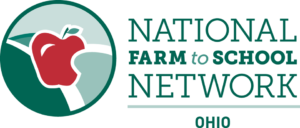 Module Overview
Module Overview
Foods that are grown indoors or outdoors at schools can be served in the cafeteria, taste testings and classroom activities across many subjects. Ensuring a safe harvest requires careful planning and garden management from the start. This module outlines important considerations related to site and soil selection, water sources, access to the garden beds, and use of clean tools.
OSU Extension Assistant Professor and Food Safety Field Specialist Nicole Arnold, PhD, contributed to this module.
 Learning Goals
Learning Goals
After this module, learners will be able to:
- Identify food safety principles related to garden management when growing fresh produce in school gardens
- List the main sources of contamination and steps that can be taken to minimize contamination.
- Describe considerations related to soil, water sources, and garden materials and tools.
 Roadmap
Roadmap
These items will all appear, in order, in the module.
- READ: Preventing Foodborne Illness
- ADDITIONAL RESOURCE: Food Safety in Gardens Fact Sheet
- ADDITIONAL RESOURCE: Where to Have Your Water Tested
Please click NEXT at the bottom of this page to advance through the module. To return to the list of modules, PC users click “Modules” in the top left corner, App users click the back arrow in the top left header.
Preventing Foodborne Illness
According to the U.S. Department of Health and Human Services, more than 100,000 people are hospitalized and 3,000 people die each year in the United States because of foodborne illnesses. Raw fruits and vegetables can be contaminated with harmful germs that cause foodborne illnesses such as Salmonella, E. coli, and Listeria.
Although that sounds scary, foodborne illnesses are preventable and unlikely if you follow good food safety practices. Taking simple steps — like washing hands and tools often — can go a long way to prevent contamination in your garden. This is especially important because children’s immune systems may still be developing, making them more susceptible to foodborne illness.
Considerations and steps to take to minimize the chance of ill effects from garden activities:
Choosing What to Plant
Individual students may be allergic to or have sensitivities to plants grown in the garden or fertilizers used. Common food allergens include peanuts and soybeans, but these are not grown in GTS. Be aware of students’ known sensitivities and be alert to reactions that may occur. If students report a severe allergy to a food suggested in the GTS Growing Guide, find a different plant that can be grown using a similar method within a similar timeframe.
Garden Site Selection
The primary concerns related to site selection are the history of harmful contamination and the likelihood of flooding. Check with your school’s administration and custodial staff and your local public health and Extension professionals for guidance and soil testing options. Excess moisture and flooding in the garden will promote bacterial and fungal growth. In rare cases, floodwater may have been contaminated by waste from septic tanks or by runoff. Good drainage will help prevent contamination and muddy messes!
Watering
As stated in Module 13, it is important to use only potable (drinkable) water, such as city tap water from a sink or hose. If using water from other sources, a filter will be required. If using watering cans or other containers, be sure to rinse them out regularly and let them dry completely, whenever possible.
To avoid contamination, do not use collected rainwater on plants that will be eaten. Water from rain barrels should only be used for flowers, ornamentals, pollinator gardens, etc.
Fertilizer and Pesticide Safety
Use only fertilizers sold for gardens. Lawn fertilizers usually contain too much nitrogen and/or weed control chemicals that can harm vegetables.
Plant fertilizers can be harmful to children if swallowed. Touching a large amount of plant fertilizer may cause skin burns. Carefully supervise students when using fertilizers and use judgment and caution when letting older students apply the fertilizers. Store all chemicals safely out of students’ reach. Read, understand, and follow all instructions and precautions on the label of your fertilizers and pesticides.
For safe pest control, see Module 14.
Potential Contamination From Animals
Wild animals, birds, or domestic pets can leave droppings in or around garden sites that carry foodborne pathogens. The garden covers used for season extension will provide some protection from this. Fences may be needed to deter larger animals.
Tools and Containers
Foodborne pathogens can be transferred to fresh produce through cross-contamination from gardening tools and harvest containers. Rinse rakes and shovels after use. Tools and containers used for harvesting, such as scissors, clippers, pails, and bowls should be cleaned and sanitized before each use. Wooden baskets should be avoided for this reason. Clean plastic bags can be used to collect produce but should not be reused. For more information about the safe handling of harvested produce, see Module 19.
Hand Washing
Ensure that all teachers, students, and volunteers have enough time, resources, and guidance to effectively wash their hands. Hands should be washed for at least 30 seconds with soap and potable water, then air dried or dried with disposable towels. Hand sanitizers should only be used when soap and water cannot be accessed.
Handwashing is one of the simplest and most effective ways to prevent foodborne illnesses.
Please click NEXT at the bottom of this page to advance through the module. To return to the list of modules, PC users click “Modules” in the top left corner, App users click the back arrow in the top left header.







